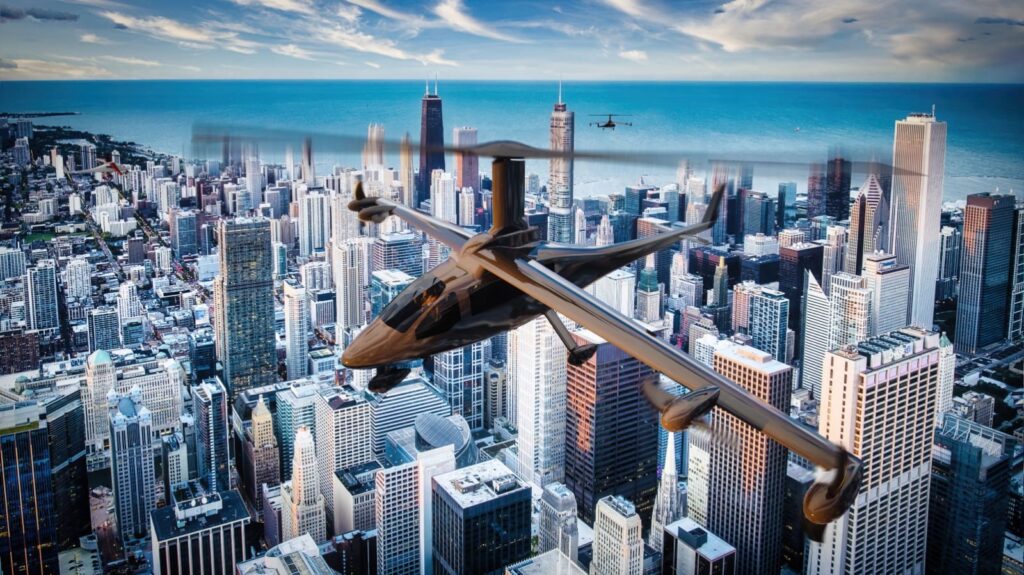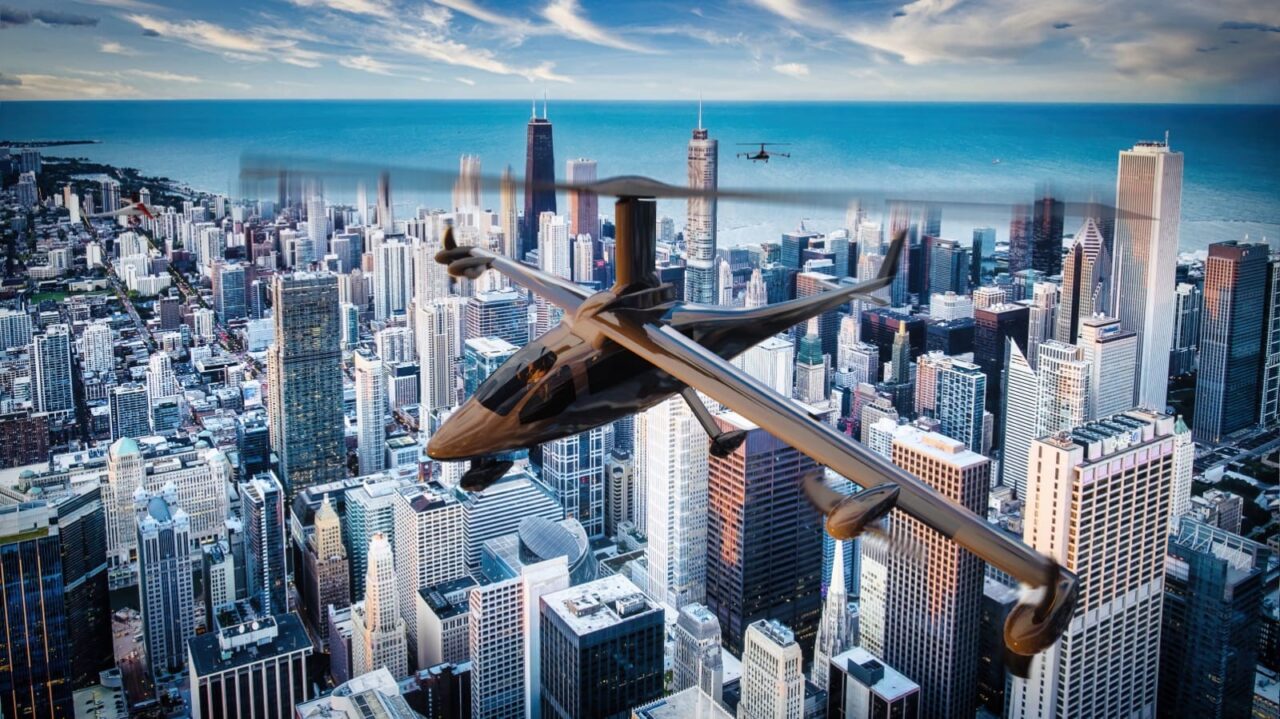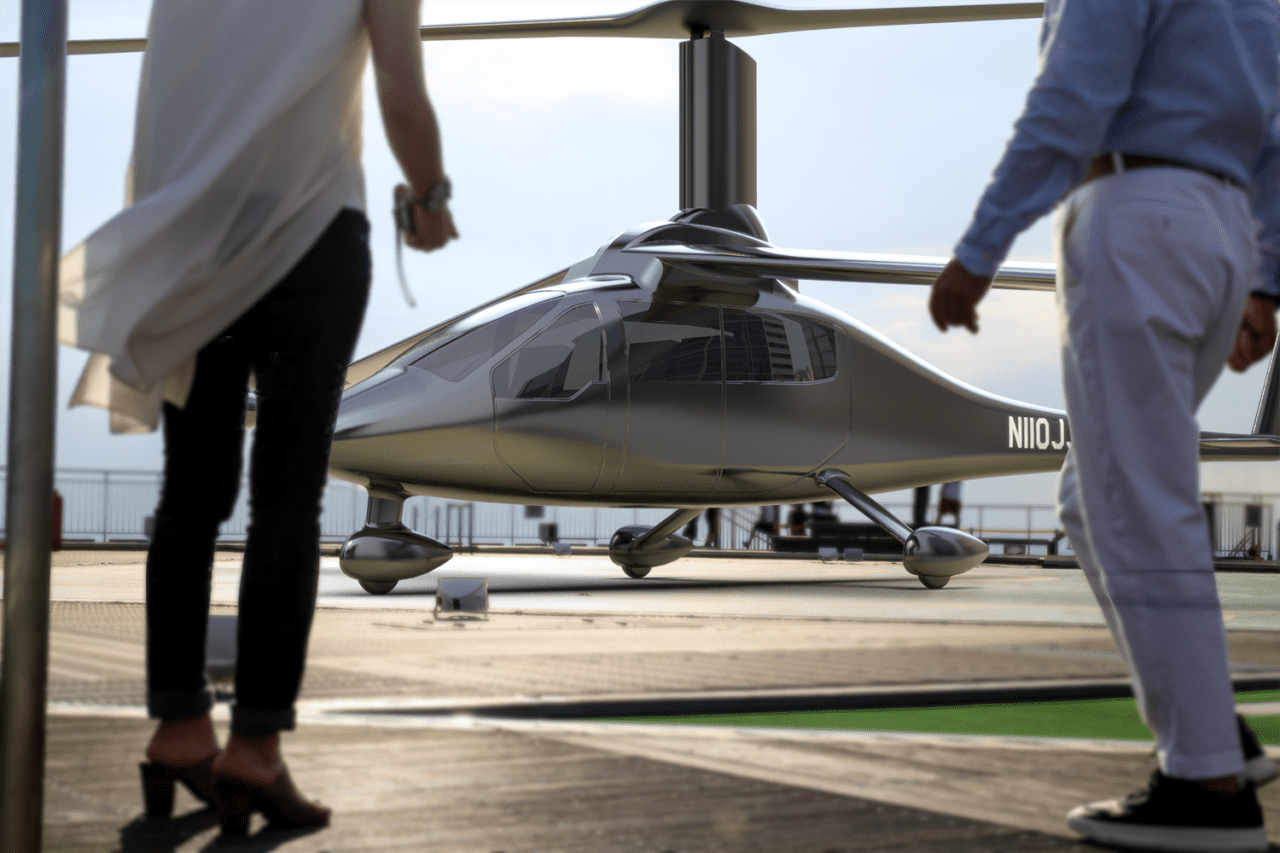Jaunt Air Mobility CEO Talks AIRO Group and Latest Journey eVTOL Program Developments


Jaunt Air Mobility is developing its five-seat fully electric eVTOL pictured here as a computer-generated prototype, and has become a wholly-owned subsidiary of AIRO Group. (Jaunt Air Mobility)
Jaunt Air Mobility’s merge with the AIRO Group (US) will provide the financial leverage and business leadership necessary to continue the development of their Journey electric vertical takeoff and landing (eVTOL) and eventually an autonomous cargo drone. During the 2021 NBAA BACE in Las Vegas, Martin Peryea, CEO of Jaunt Air Mobility, explained how joining the AIRO Group will help achieve their eVTOL aspirations with Journey and provided some insight into how they’re approaching the development of Journey’s fly-by-wire flight control system.
Dallas, Texas-based Jaunt is aiming to develop Journey, a five-seat all-electric eVTOL to be ready for entry into service by 2026. Separately, the company is also developing a larger longer range hybrid-electric diesel-powered aircraft with VerdeGo Aero.
AIRO Group’s addition of Jaunt Air Mobility as a wholly-owned subsidiary now makes it the parent company of six companies, including Drone, Agile Defense, Aspen Avionics, Coastal Defense, Sky-Watch and VRCO.
“Financing and funding the development of our aircraft is an area where Jaunt needed some help, and we have never taken a company public, so joining AIRO allows us to participate in their business plans and collectively we know that the companies are worth more together than as individual companies,” Peryea said. “Having worked for Bell, a Textron company with a corporate governance model in place, I have a lot of experience working under this type of structure and I envision that this is going to be very similar to that model.”

Jaunt Air Mobility CEO Marin Peryea.
Jaunt is developing an eVTOL that vertically takes off and lands like a helicopter, while transitioning into forward flight like a traditional fixed-wing aircraft. The company is developing Journey to certification requirements outlined by the rotorcraft Federal Aviation Administration (FAA) Advisory Circular (AC) 29.1309-2.
“There is no new ruling that needs to take place or occur, because we’re certifying under existing Part 29 rules, which makes it easier for our engineers because they know what the design requirements are going to be. Certification specialists can validate our work because the familiarity with rotorcraft certification is already there. They will be able to understand how this aircraft operates and behaves in low-speed, its vertical takeoff and landing qualities and that gives us an advantage over some of the other aircraft configurations coming into this space that are truly not known today in terms of how they behave, especially in vertical modes of flight,” Peryea said.
Peryea said that one of the challenges for some of the newer never-seen-before aircraft configurations being proposed in the eVTOL space right now is how those designs will perform in extreme conditions or the “corners” of their respective flight envelopes.
“We call it the corners of the flight envelope,” Peryea said. “That’s one of the challenges that the rotorcraft industry has solved over the years of operating in high wind conditions, in urban areas. It requires a lot of control power and understanding of the flight dynamics of the aircraft and a lot of these new aircraft configurations don’t have any of that experience yet, it’s something they’re going to have to spend a lot of time testing and understanding. It’s really the corners of the flight envelope, because flying in nice calm easy air is no big challenge. It’s the extremes, the conditions where you really have to test your aircraft to make sure it remains safe for passengers in that flight mode.”
According to Peryea, the slow rotor capability of Journey is also a key element of its flight control system. Jaunt is using a computer system within the aircraft tasked with slowing the rotor tip speed in an effort to reduce Journey’s drag and associated vibration.
On the avionics side of Journey’s development, Jaunt is working with Garmin. Peryea said that the form factors of Garmin’s avionics systems that have been integrated into “smaller and lighter packages” in recent years, is complimentary to the space and weight savings necessary for achieving the payload, passenger capacity and payload targets that Jaunt has outlined.
Becoming an AIRO Group subsidiary also helps Jaunt Air Mobility’s funding of the development and testing of the battery technology key to Journey’s eVTOL performance and operational scope. BAE Systems first signed an electric energy management systems development agreement with Jaunt in December 2019, and has been working in conjunction with Triumph Aerospace Structures to integrate hardware and software for Journey’s battery management system as well as managing the actuation and high-voltage power distribution.
“We’ve been working closely with BAE, they’re developing the battery and battery management system and they have supplied to Boeing and Airbus and other aerospace companies and bring a tremendous amount of aircraft certification experience. They actually supply a lot of battery systems today for ground transportation and have a tremendous amount of experience developing these systems,” Peryea said.

(Jaunt Air Mobility)
In recent months, leading up to the new merge with AIRO Group, Jaunt has continued to expand into new partnerships and government-funded eVTOL competitions as well as research and development contracts. In May for example, the company appointed former Eric Côté, a former Bombardier executive, to serve as president of Jaunt Air Mobility Canada, where the company will open new design and manufacturing centers.
CAE has also been selected to lead the design and development of the Jaunt Aircraft Systems Integration Lab (JASIL) and VerdeGo Aero announced the results of 500 full-scale tests of the prototype hybrid system that they’re developing for Jaunt’s larger hybrid electric aircraft.
“AIRO has existing revenue in its current civilian and military operations and has historically reinvested earnings into Independent Research and Development (IRAD). Therefore, additional capital required to produce fully operational eVTOL aircraft is substantially reduced to our advantage compared with our competitors,” Dr. Chirinjeev Kathuria, Executive Chairman of AIRO, said of their merger with Jaunt Air Mobility. “The current market capitalization of companies in the eVTOL space and urban air mobility platforms are very significant. AIRO additionally delivers diversified services across the UAM/Avionics/eVTOL/Defense marketplace.
AIRO is poised to be the leading publicly traded mid-tier aerospace and defense company after the void created by acquisitions in the public marketplace.”
The post Jaunt Air Mobility CEO Talks AIRO Group and Latest Journey eVTOL Program Developments appeared first on Aviation Today.
—————
Boost Internet Speed–
Free Business Hosting–
Free Email Account–
Dropcatch–
Free Secure Email–
Secure Email–
Cheap VOIP Calls–
Free Hosting–
Boost Inflight Wifi–
Premium Domains–
Free Domains






